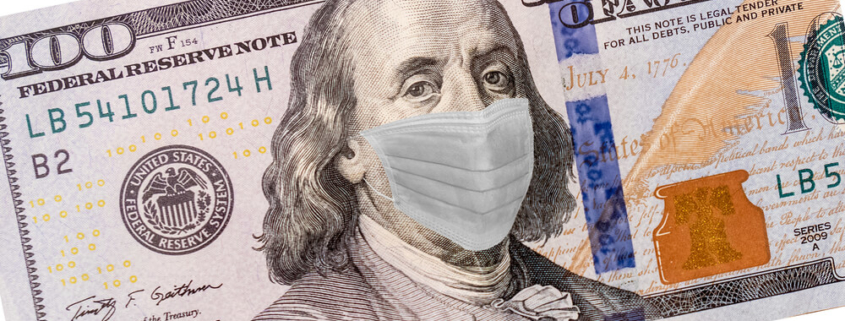Will SSDI Recipients Get a Stimulus Check for COVID-19 Relief?
The federal coronavirus relief package came together so quickly that many Americans are left with lingering questions. The $2 trillion package largely benefits corporations and small businesses but does have some relief for citizens and residents. The aid package allows for a one-time payment of $1200 to single taxpayers, $2400 to married taxpayers, and $500 for each dependent. The benefits start to phase out for single taxpayers that earn $75,000 per year and couples who earn $150,000 per year.
But what about those who rely on SSDI? Keep reading to learn more about stimulus payments to SSDI recipients and what you have to do to get your funds.
Are You Eligible for a Stimulus Check?
Whether you receive Social Security for disability, retirement, or supplemental income, you are eligible to receive stimulus payments. Originally, the relief package would only give $600 to low-income individuals, but it was later revised to grant them the full $1200.
The only reason you would not be eligible for a payment would be if you had additional income that put you over the limit for the stimulus payment.
Claiming Your Payment
The rollout of this plan led got confusion about how taxpayers would receive their payments and what would happen to those who do not file taxes. The handling of payments goes through the IRS. For taxpayers who filed their taxes in 2019, eligibility and direct deposit information was determined from the 2019 tax return.
Those who have not yet filed for 2019 had information taken from their 2018 return. Many people qualify for direct deposit, and in most cases, funds were (or will be) distributed to the accounts people use for tax refunds.
However, if you are not required to file tax returns, you may wonder about how you are supposed to get your funds. Luckily, most Social Security are paid by direct deposit. The government will use the 1099 statements for these individuals to determine their eligibility and figure out where to send payments.
Rules for Non-Filers with Dependents
For SSDI recipients without dependents, this solution is enough. They receive their $1200 or $2400 via direct deposit or check. It is a bit more complicated for non-filers with dependents. The funds distributed based on SSDI information only include funds for taxpayers, not their dependents.
To receive $500 per dependent this year, SSDI recipients needed to use the non-filers tool to register their dependents by April 22. Those who missed this deadline will be able to claim that amount when they file 2020 taxes.
SSDI Recipients with Other Income
While many SSDI recipients live only on their disability income, there are those with other money coming in. This could affect your eligibility for stimulus payments. If you file as single and your total income is over $75,000, your payment amount will start to decrease. It decreases by 5% of the amount over the threshold and disappears completely at $99,000 per year. If you are married and your combined income is $150,000 or higher, your stimulus will decrease by 5% of the amount over the threshold. If you earn $198,000 per year or more, you do not receive any stimulus payment.
Checking Your Status
While many people have already received their stimulus payment, there are those who are still waiting. If you have not received a check in the mail or had funds deposited into your account, you can find out if the IRS has information about your payment.
The “Get My Payment” tool on the IRS website uses your birth date, social security number, and address to find out if there is more information available regarding your payment. If you have a payment pending, it will tell you the deposit date and give you the last few digits of the account into which your money will be deposited. It will also let you know if you have to provide more information.
There have been some issues with delayed or missing payments. Due to how quickly this plan was implemented and how many taxpayers are set to receive payments, this is to be expected. Others have had issues with payments that are the incorrect amount. As this situation progresses, there may be options for those who have not received payments or who have not received as much as they should have.





Leave a Reply
Want to join the discussion?Feel free to contribute!